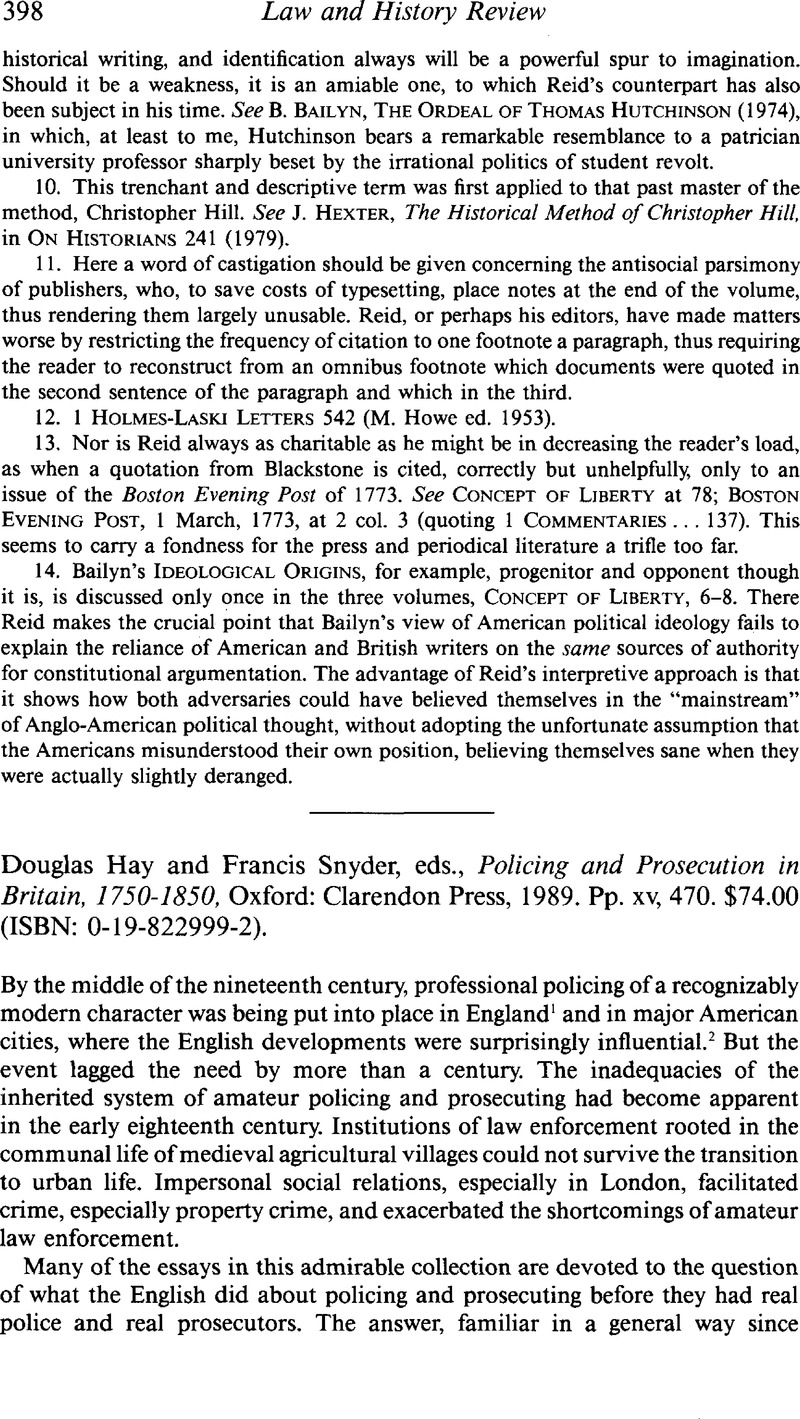Published online by Cambridge University Press: 28 October 2011

1. For a succinct and thoughtful account of the development, see Philips, “A New Engine of Power and Authority”: The Institutionalization of Law-Enforcement in England 1780-1830, in Crime and the Law: The Social History of Crime in Western Europe Since 1500, at 155-89 (V. A. C. Gatrell, B. Lenman and G. Parker, eds. 1980).
2. A convenient overview on the American history: S. H. Palmer, Police and Protest in England and Ireland 1780-1850, at 19-24 (1988).
3. 2L. Radzinowicz, A History of English Criminal Law and its Administration from 1750: The Clash Between Private Initiative and Public Interest in the Enforcement of the Law (1956).
4. See generally G. Howson, Thief-Taker General: The Rise and Fall of Jonathan Wild (1970).
5. I have elsewhere directed attention to the significance of the McDaniel scandal for the subsequent development of criminal trial procedure in the eighteenth century. Langbein, J., Shaping the Eighteenth-Century Criminal Trial: A View from the Ryder Sources, 50 U. Chi. L. Rev. 1 105–14 (1983Google Scholar).
6. Paley: “Between 1742 and 1753, three men served the office of Recorder for periods that varied from two to five years. It is difficult to believe that any of them could have been unaware of the thief-takers' tactics. As the man who authorized the distribution of rewards, the Recorder was in a position to know just how often thieftakers stood to profit from a convinction. He, more than anyone else, was best placed to note the distinctive and repetitive pattern of conspiratorial prosecutions. At best, the conduct of successive Recorders amounts to malicious complacency; at worst one is led to suspect outright corruption.” (328).
7. The connection is tenuous because the associations were active primarily in the countryside. They were most concerned with the theft of horses and other livestock, as opposed to the urban developments (e.g. gang crime, the Gordon Riots) about which there was so much alarm.
8. For detail see J. M. Beattie, Crime and the Courts in England: 1660-1800, at 41-47 (1986).
9. In an earlier work Philips did compile some data on aggregate prosecution costs in the second quarter of the nineteenth century. D. Philips, Crime and Authority in Victorian England: The Black Country 1835-1860, at 110-23 (1977).
10. Beattie, supra note 8, at 46 n. 26.